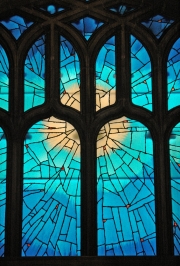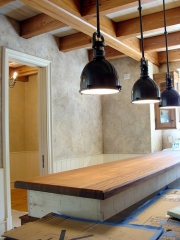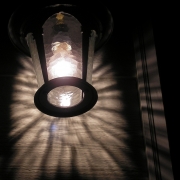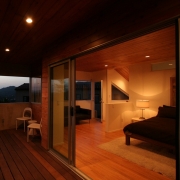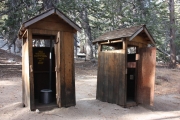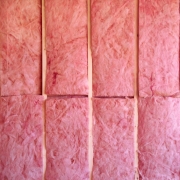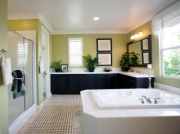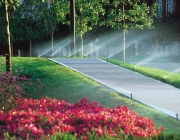Jeff Wilson Everyday DIY Blog
Let's talk DIY
This is the place to rant, rave, brag, belly-ache, crack a joke, procrastinate, and delve into the metaphysical aspects of the DIY mindset. We’re off the map, on a tangent, and frequently off topic. This is the stuff we don’t show on TV.
Stone Countertops
Metal Countertops
Concrete Surfaced Countertops
Stained Glass: Painting The Light
In many historic homes, especially ones that date from the Victorian era, one of the most eye-catching design features is a stained glass window. These classic elements recapture the elegance and luxury of days gone by, but the beauty of stained glass is no longer restricted to older homes. Many manufacturers nationwide offer an extensive range of modern stained glass products to suit the needs of any homeowner.
The term “stained glass” actually refers to glass that has been painted and then fired; traditional works are constructed from pieces of cut glass that are set into lead channeling to form a pattern. Most of what we see today is really art glass, although some artisans still practice traditional methods.
Faux Painting
The best alternative to plain painted surfaces used to be wallpaper. But wallpaper is difficult to remove, and installing it requires a lot of prep work, not to mention the time spent on precision measuring, cutting, and hanging. Faux painting can have an effect that is just as dramatic, but it isn’t as much of a commitment. And painting is one of the least expensive ways to customize a space.
Let There Be Light: Installing Lighting Fixtures
In a recent survey conducted by the Foundation of the Fabricators and Manufacturers Association, 60% of the 1,000 people surveyed stated that they avoided installing light fixtures. Homeowners surveyed also avoided unclogging a drain and replacing a window pane, among other things. To see all of the projects homeowners avoided, read Survey Says: Homeowners Avoid Simple Repairs. Over the next few months, the At Home channel will provide how-to articles covering all projects on the list. Our main goal is to show how easy the repairs actually are and that homeowners can do the work themselves.
How to Install A Dimmer Switch
Three recessed ceiling light fixtures flood the fireplace in our family room. Sometime after we moved in, the dimmer switch that controls the lights stopped functioning properly. It turned the lights on and off, but did not dim them. We were not concerned with our inability to dim the lights and affect the mood of the room because the light bulbs' brightness at that time was not an issue. Recently, we started replacing our incandascent light bulbs with compact fluorescent light bulbs (CFL). The CFL bulbs we purchased have a higher lumen output than the incandescents, resulting in a brighter light. It was now time to solve our dimming problem.
Maintenance Tips: Toilets
When you consider the lifespan of most fixtures and appliances around the home, toilets rank near the top. According to the Study of Life Expectancy of Home Components which was prepared in 2007 by the National Association of Home Builders (NAHB), "Toilets have an unlimited lifespan, but the components inside the toilet tank do require some maintenance."
How Insulation Can Save You Money
Insulation can save you money. Homeowners heat and cool their houses with various types of energy which fluctuate in price on a regular basis due to a variety of variables that are outside of their control. Lowering your thermostat, installing a programmable thermostat, or enrolling in a monthly budget plan could lower your bills; however, you may have overlooked the one thing that can truly lower your energy expenses, insulation. Investing in insulation can save you money, paying you back over time through reduced monthly energy expenses, as well as providing greater year-round comfort and a quieter indoor environment.
Maintenance Tips: Whirlpool Tubs
According to the Study of Life Expectancy of Home Components, which was prepared in 2007 by the National Association of Home Builders (NAHB), the average life expectancy of a whirlpool tub is 20-50 years (number based on the fixture itself, not the circulation system). The life expectancy of the circulation system (the pump, fittings, and piping) will vary depending on the amount of use. A whirlpool tub should be maintained like any other bathtub or shower, with one exception: what you don't see. A whirlpool tub's circulation system isn't readily visible, providing a perfect environment for the growth of bacteria.
Irrigation: Is Grass Greener on the Other Side?
Water is essential to grass. Healthy grass is composed of 75 - 85% water, and water assists with seed germination, maintaining plant temperature, and tissue development, along with food and nutrient processes. Without water, grass is susceptible to disease, will brown and wilt and, although very resilient, may die. Healthy, lush, green grass is achieved from thorough, regular watering, which develops deep, drought-resistant roots. The amount of water, frequency, and method of watering depends on where you live, what type of grass you grow, and how you approach completing the task. Common methods include manual watering and automatic sprinkler systems.
